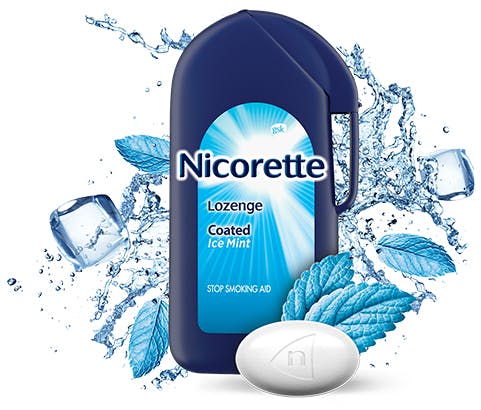
1. Physical Triggers
There are 2 types of physical triggers: those related to your senses and those related to the physical habits you formed around smoking. The triggers related to your senses occur when you smell cigarette smoke, see a pack of cigarettes, or handle a lighter. The triggers related to your habits can occur when you miss having something in your mouth or the hand-to-mouth movement of smoking. Keep track of your physical triggers and consider these tips to keep your resolve strong.
Try a toothpick
The hand-to-mouth movement of smoking is a habit that’s hard to beat. But you don’t have to lose it all together―just ditch the cigarette by replacing it with a toothpick.
Chew on something
Whether carrot sticks, gum, or a lollipop, fill the need to have something in your mouth by chewing.
Purge your packs
Even if you’re feeling confident in your quit, the sight of a lighter or an ashtray could be enough to unexpectedly throw you off. Comb through all of your belongings and get rid of everything smoking related.





2. Emotional Triggers
As a smoker, you may have turned to cigarettes to ease emotions like stress, anxiety, and boredom. So while quitting, those feelings often become emotional triggers that lead to cravings. They can sometimes build up, like over a long, stressful week—or can hit you out of nowhere, like a sudden bad mood. Regardless of how emotional triggers come on, there are things you can do to keep them in check.
Sweat it out
When feeling stressed, swap a cigarette break for a sweat break. Exercise releases endorphins in the brain that can boost your mood.
Keep busy
Feeling bored often leads to cravings. So start a new house project, refinish a piece of furniture, or pick up a new hobby—anything to keep yourself occupied.
Journal
Carry a journal with you to combat those unexpected emotions by writing them down, rather than by smoking.





3. Behavioral Triggers
Smoking is often associated with other behaviors. Maybe you always had a cigarette while driving, watching TV after work, or with your morning coffee. During your quit, these activities can often feel incomplete without a smoke, making them behavioral triggers that lead to cravings. Because these triggers are based on your own patterns, they are inherently predictable. Being able to anticipate them means you can better prepare for when they come on.
Try Nicorette Coated Ice Mint Lozenge
If you’re used to smoking while driving, replace cigarettes with a Nicorette Coated Lozenge—its amazing taste and long-lasting craving relief can help keep your mind off smoking.
Go for a walk
If you normally had a cigarette during your lunch break, throw on a new playlist or grab a friend and go for a walk instead. Head to a new lunch spot, a nearby park, or take a stroll around the block.
Switch up the scene
Sometimes just changing the setting of your activities can help ease behavioral triggers. If you typically had a smoke in the kitchen with your morning coffee, go to another room or to a local coffee shop instead.





4. Social Triggers
It can be very difficult to abstain from cigarettes around others who smoke. However, you can often anticipate where these smokers may be. The bar scene, for instance, isn’t likely to be so quitter friendly. Knowing what to expect before leaving the house can make combatting social-related cravings a bit easier.

Regardless of what triggers your cravings, nicotine replacement products—like the all-new Nicorette Coated Ice Mint—can help. As the first FDA-approved coated lozenge, it combines long-lasting craving relief with amazing taste and a smooth texture. Try a free taste sample* today.
*Samples reflect the taste of Nicorette Coated Lozenge but are nicotine free and do not provide craving relief.








